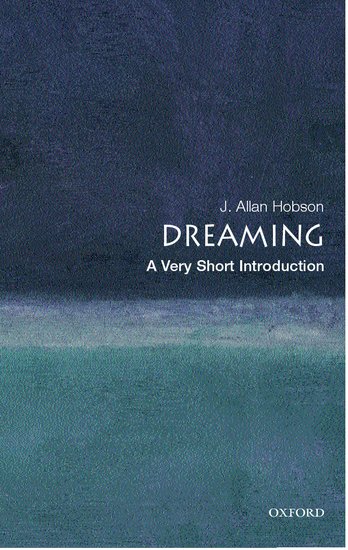Home >
A Very Short Introduction >
Dreaming (Medical)
A Very Short Introduction | Medical
Dreaming
ISBN: 9780192802156
Series: A Very Short Introduction
Dreaming (Medical)
A Very Short Introduction Dreaming (Medical) Media > Books > Non-Fiction > Education Books Expect Delays of Up to 4 Weeks| Order Below |
ISBN
9780192802156 (10-digit ISBN: 0192802151)
- Description
- Key Features
- Series Description
- Table of Contents
- Looks at the new scientific facts about dreaming and possible answers to long-held questions about the activation, function, and interpretation of dreams
- Relates the science of dreaming and sleep to their interpretation in history and in psychoanalysis
- Investigates the relationships between dreaming, learning, memory, and consciousness
- Explores how discoveries in the science of dreams have advanced our understanding of mental illness
What is dreaming, and what causes it? Why are dreams so strange and why are they so hard to remember? Replacing dream mystique with modern dream science, J. Allan Hobson provides a new and increasingly complete picture of how dreaming is created by the brain. Focusing on dreaming to explain the mechanisms of sleep, this book explores how the new science of dreaming is affecting theories in psychoanalysis, and how it is helping our understanding of the causes of mental illness.
J. Allan Hobson investigates his own dreams to illustrate and explain some of the fascinating discoveries of modern sleep science, while challenging some of the traditionally accepted theories about the meaning of dreams. He reveals how dreaming maintains and develops the mind, why we go crazy in our dreams in order to avoid doing so when we are awake, and why sleep is not just good for health but essential for life.
Oxford's Very Short Introductions series offers concise and original introductions to a wide range of subjects--from Islam to Sociology, Politics to Classics, Literary Theory to History, and Archaeology to the Bible.
Not simply a textbook of definitions, each volume in this series provides trenchant and provocative--yet always balanced and complete--discussions of the central issues in a given discipline or field. Every Very Short Introduction gives a readable evolution of the subject in question, demonstrating how the subject has developed and how it has influenced society. Eventually, the series will encompass every major academic discipline, offering all students an accessible and abundant reference library.
Whatever the area of study that one deems important or appealing, whatever the topic that fascinates the general reader, the Very Short Introductions series has a handy and affordable guide that will likely prove indispensable.
Please note: As this series is not ELT material, these titles are not subject to discount.
1: What is dreaming?
2: Why dream content analysis failed to become a science
3: How is the brain activated in sleep?
4: Cells and molecules of the dreaming brain
5: Why dream? The functions of brain activation in sleep
6: Disorders of dreaming
7: Dreaming as delirium: sleep and mental illness
8: The new neuropsychology of dreaming
9: Dreaming, learning and memory
10: Dream consciousness
11: The interpretation of dreams
Conclusion
What is dreaming, and what causes it? Why are dreams so strange and why are they so hard to remember? Replacing dream mystique with modern dream science, J. Allan Hobson provides a new and increasingly complete picture of how dreaming is created by the brain. Focusing on dreaming to explain the mechanisms of sleep, this book explores how the new science of dreaming is affecting theories in psychoanalysis, and how it is helping our understanding of the causes of mental illness.
J. Allan Hobson investigates his own dreams to illustrate and explain some of the fascinating discoveries of modern sleep science, while challenging some of the traditionally accepted theories about the meaning of dreams. He reveals how dreaming maintains and develops the mind, why we go crazy in our dreams in order to avoid doing so when we are awake, and why sleep is not just good for health but essential for life.
Key Features
- Looks at the new scientific facts about dreaming and possible answers to long-held questions about the activation, function, and interpretation of dreams
- Relates the science of dreaming and sleep to their interpretation in history and in psychoanalysis
- Investigates the relationships between dreaming, learning, memory, and consciousness
- Explores how discoveries in the science of dreams have advanced our understanding of mental illness
Series Description
Oxford's Very Short Introductions series offers concise and original introductions to a wide range of subjects--from Islam to Sociology, Politics to Classics, Literary Theory to History, and Archaeology to the Bible.
Not simply a textbook of definitions, each volume in this series provides trenchant and provocative--yet always balanced and complete--discussions of the central issues in a given discipline or field. Every Very Short Introduction gives a readable evolution of the subject in question, demonstrating how the subject has developed and how it has influenced society. Eventually, the series will encompass every major academic discipline, offering all students an accessible and abundant reference library.
Whatever the area of study that one deems important or appealing, whatever the topic that fascinates the general reader, the Very Short Introductions series has a handy and affordable guide that will likely prove indispensable.
Please note: As this series is not ELT material, these titles are not subject to discount.
EASY ORDER FORM
PRICES LISTED INCLUDE CONSUMPTION TAX
Price Before Tax:
¥1,790


